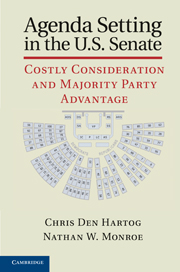During 1997 and 1998, the United States Congress wrestled with H.R. 2646, the Education Savings Act for Public and Private Schools, a bill that proposed the creation of tax-free education savings accounts. Most Republicans favored the bill, while most Democrats opposed it (Hosansky 1997; Kirchhoff 1998). Republicans held 52 percent of the House seats (227 of 434 seats at the time the bill passed) and 55 of the 100 Senate seats.
The bill passed through the House quickly. It was introduced on October 9, 1997, reported from the Ways and Means Committee on October 21, and brought up, debated, and passed (without any amendments having been offered) on October 23. On the final passage vote, Republicans voted 215–8 in favor; Democrats voted 190–15 against.
In the Senate, however, the fight over the bill was much different. The chamber took up the bill on the floor by unanimous consent on October 29; but on October 31 and November 4, the Senate voted against invoking cloture, each time with 56 votes for cloture and a nearly perfect partisan split.
The bill was then set aside until the following March, when majority leader Trent Lott made a motion to bring the bill up on the floor. Republican Senate Finance Committee chair William Roth proposed an amendment – a bundle of changes designed to lure Democratic votes (Kirchhoff 1998) – and on March 17 the Senate voted 74–24 to invoke cloture on the motion to proceed, with all 55 Republicans and 19 of 43 Democrats voting in favor.
